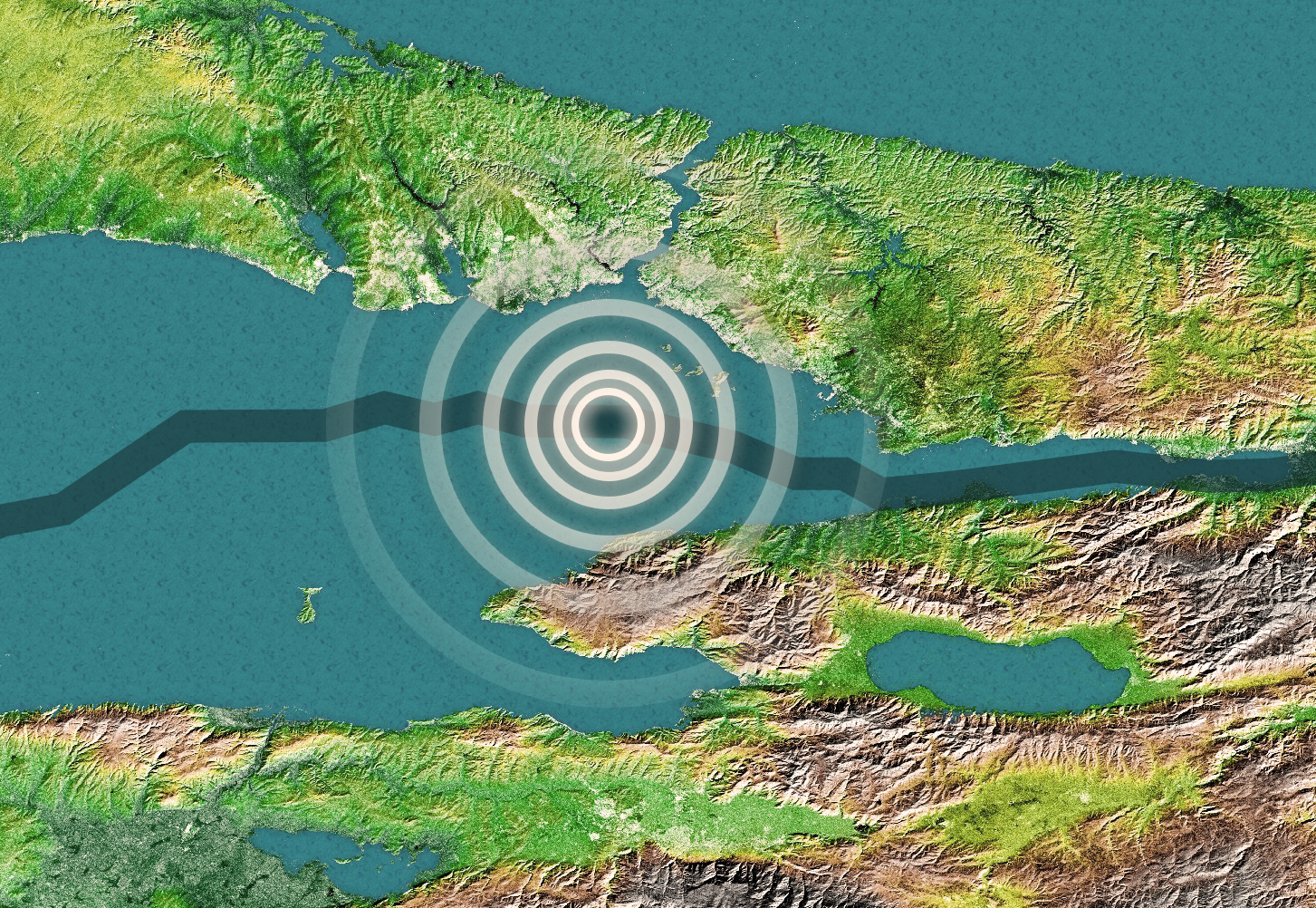Calm Before the Quake? Turkey May Be Due for the Big One

A powerful earthquake of magnitude 7 or greater may be building up along a now-quiet fault on the coast of Istanbul, a new study finds.
Different segments of the North Anatolian Fault, one of the most energetic and longest earthquake faults in the world, have fallen silent. This silence may mean the "seismic gap" may be inactive and two tectonic plates are peacefully sliding past each other. Or, the segment could be building tension that accrues over decades and may eventually release it in a large, seismic event.
There is evidence for both cases, researchers from the Massachusetts Institute of Technology (MIT) and Turkey found in a new study.
The North Anatolian Fault is 745 miles (1,199 kilometers) long, about the same length as the San Andreas Fault in California, and stretches from northern Turkey to the Aegean Sea. A analysis of 20 years' worth of GPS data along the fault shows that a seismic gap under the Sea of Marmara at Princes Island, just 5 miles (8 km) west of Istanbul, is likely to cause the next big earthquake. [Photo Journal: The Gorgeous San Andreas Fault]
The western segment of the seismic gap, however, seems to be moving without producing large earthquakes, they found.
"Istanbul is a large city, and many of the buildings are very old and not built to the highest modern standards compared to, say, Southern California," Michael Floyd, a research scientist in MIT's department of earth, atmospheric and planetary sciences, said in a statement. "From an earthquake scientist's perspective, this is a hotspot for potential seismic hazards."
It's impossible to predict when such an earthquake might happen, but the researchers urged people to set up earthquake safety plans.
Sign up for the Live Science daily newsletter now
Get the world’s most fascinating discoveries delivered straight to your inbox.
"Ultimately, for people's safety, we encourage them to be prepared," Floyd said. "To be prepared, they need to know what to prepare for — that's where our work can contribute."
In 1509, the North Anatolian Fault triggered a quake long considered one of the worst to hit the Mediterranean in the past 500 years,according to a 2003 study in the Journal of Geophysical Research. Turkey's latest quake shook Izmit in 1999, killing 30,000 people and causing $6.5 billion in damages. [7 Ways the Earth Changes in the Blink of an Eye]
To determine when the next big one might hit, the researchers collected data from about 100 GPS stations along the fault, to track its movement over time.
"By continuously tracking, we can tell which parts of the Earth's crust are moving relative to other parts, and we can see that this fault has relative motion across it at about the rate at which your fingernail grows," Floyd said.
The fault is expected to move about an inch (25 millimeters) a year, which may sometimes cause earthquakes. But the segment at Princes Island isn't budging. Instead of moving a third- to a half-inch (10 to 15 mm) per year as it should, the segment is stuck and building up tension.
The Princes Island segment should have slipped about 8 to 11 feet (2.4 to 3.4 meters) since its last earthquake 250 years ago, but it hasn't, researchers said. Instead, tension is building up. If that tension were released in a giant, single earthquake, the Earth could move as much as 11 feet in a few seconds, the study found.
Such a blow could destroy Istanbul, a city of about 14 million people.
"Since the international airport is located in an area where ground motion would be high, it would be difficult to get in emergency troops," Marco Bohnhoff, a professor at the German Research Center for Geosciences in Potsdam, Germany, said in the statement. "And unfortunately 90 percent of buildings in Istanbul do not fulfill building codes and might not resist the expected earthquake."
With help from the World Bank and the Global Facility for Disaster Reduction and Recovery, workers have retrofitted or reconstructed more than 1,000 public buildings in Istanbul, including schools, hospitals and clinics. In addition, about 662,000 peoplehave received training in disaster preparedness, and 3,630 civil engineers in Turkey have been trained in seismic retrofitting code, according to a statement.
The fault may release a series of smaller earthquakes, but people should still be prepared for a large one, the researchers said.
"It only takes one to affect many lives," Floyd said. "In a location like Istanbul that is known to be subject to large earthquakes, it comes back to the message: Always be prepared."
The study was published online Aug. 22 in the journal Geophysical Research Letters.
Follow Laura Geggel on Twitter @LauraGeggel and Google+. Follow Live Science @livescience, Facebook & Google+. Original article on Live Science.

Laura is the archaeology and Life's Little Mysteries editor at Live Science. She also reports on general science, including paleontology. Her work has appeared in The New York Times, Scholastic, Popular Science and Spectrum, a site on autism research. She has won multiple awards from the Society of Professional Journalists and the Washington Newspaper Publishers Association for her reporting at a weekly newspaper near Seattle. Laura holds a bachelor's degree in English literature and psychology from Washington University in St. Louis and a master's degree in science writing from NYU.









